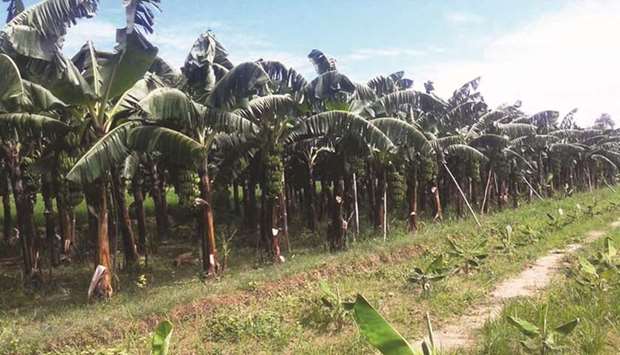The landslide was 19 years ago, but he remembers it
vividly.
“I am happy my family survived but whatever I owned was gone forever,” the 53-year-old father of three told the Thomson Reuters Foundation from Simalpani, a small town on the foothills of the Himalayas some 200km (130 miles) west of Kathmandu.
Simpalpani and neighbouring villages – which sit on a geological faultline – have been struck by 16 massive landslides over the last 50 years, aid
workers said.
Rising global temperatures have shrunk Nepal’s glaciers, with meltwater forming lakes that flood regularly, causing widespread destruction.
But farmers clearing forests for agriculture are also to blame, experts say. About 80% of Nepal’s 28mn people rely on agriculture for their living, many using destructive traditional slash and burn
techniques.
For decades, villagers walked into the forests and indiscriminately cut trees for cooking, heating and fodder.
“An intervention was urgently needed to stop this and save resources vital to the livelihood of the people,” said Dhruba Gautam, executive director, National Disaster Risk
Reduction Centre Nepal.
Since 2010, the charity has been teaching 14,000 families in 28 villages in the Banganga basin, and home to an important wetland, to change their farming habits.
Farmers have persuaded each other to adopt practices that protect forests, soil, rivers and wetlands, as well as earning a better living.
Mapping data shows that slash and burn farming in the area has fallen by 80% since the project began, Gautam said.
It won the Solution Search award for innovative conservation in November, and $30,000 to scale up the project, which Brett Jenks, president of Rare, the US-based charity behind the prize, said could be “accessible
for other communities”.
Women are on the frontline of the campaign to persuade farmers to adopt soil-friendly crops like legumes, bananas and pineapples, whose roots help control erosion on slopes.
Sita Khanal, a housewife in Thada village, 10km west of Simalpani, heads a team of a dozen villagers tasked with persuading their neighbours to abandon their destructive practices and use forest products without depleting them.
Only unwanted, fallen or overgrown trees are cleared.
“The villagers were initially hesitant to abandon old approaches but they embraced the changes,” she said, adding that they earn more from the new crops.
Locals have also been trained to monitor rainfall and temperatures, with villagers upstream warning those downstream of impending floods by text
message.
“We have seen how disasters have gone down since we changed old farming practices that caused them,” said Jum Bahadur Magar, 40, a farmer in Thada.
Aid agencies and the government have provided fuel-efficient cooking stoves, biogas plants and solar panels to reduce the felling of trees.
“It was very difficult,” said Indrakala Gharti, a 42-year-old farmer in Thada.
“But now we are happy. We have enough to feed the family, and can sell the excess to help with our kids’ schooling.”

